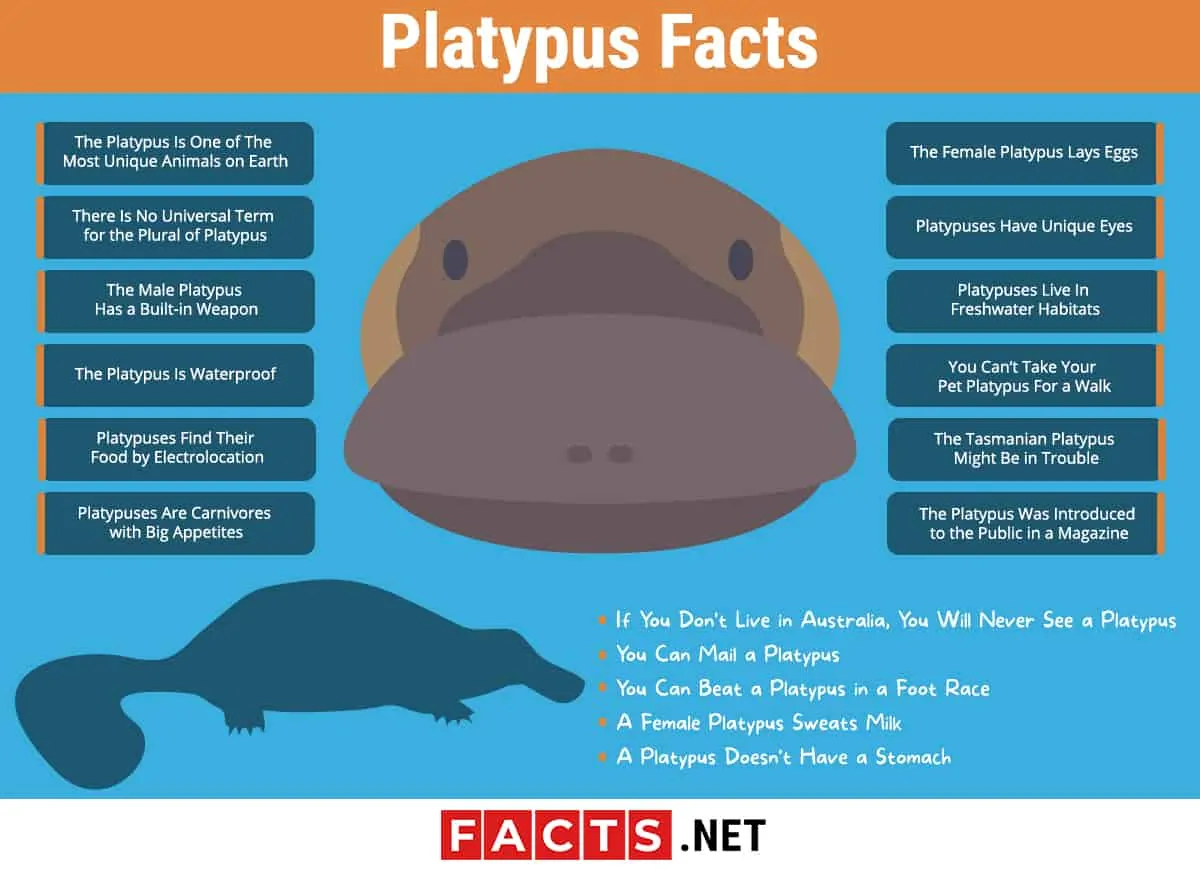

Male platypuses have a hollow spur on each hind leg connected to a venom secreting gland, and while their venom is lethal, there are no recorded deaths from platypuses or from platypus stings.Ģ. They might look cute and cuddly, but come across a male platypus in mating season and you’ll be in for a painful shock. Here are 8 things you might not know about the platypus. With water-resistant fur, this semi-aquatic creature loves to frolic and play in the freshwater rivers and creeks it calls home. Take action now to protect them and their habitat!ĪDOPT A PLATYPUS FIND OUT MORE ABOUT OUR REWILDING WORKĭespite being a renowned recluse, the platypus is one of Australia’s most recognised animals. She feeds her babies with milk patches located in the middle of the belly.Īverage lifespan of platypus is 6 years in the wild and between 10 and 15 in captivity.Platypus are facing a silent extinction. Unlike other mammals, females do not have nipples. Young platypuses hatch after 10 days.īabies are very small (like a lima bean) and completely dependent on their mother for the first couple of months. She keeps the eggs warm with her body and tail. Female lays between 1 and 3 leathery eggs in a burrow. Nursing burrows are longer (up to 100 feet long) and usually better protected than camping burrows. There are two types of burrows: nursing and camping. Platypus rests 17 hours per day in the burrows that are located near the water. Platypus walks using its knuckles when it is on the ground. Since platypus does not have teeth, it grinds food using the gravel and the pads in its bill. It feeds on shrimps and other small crustaceans, worms, mussels. Platypus mainly hunts during the night and it belongs to the group of carnivores (meat-eater). These receptors are able to recognize small changes in the electric field around living creatures that are moving under the water. It can spend two minutes under the water.Įven though it is deaf and blind under the water, platypus is able to detect its prey using special type of receptors located on its bill. Platypus closes its eyes, ears and nose during diving. Tail is also used for storing the fats that will be used as a source of energy when the food is scarce. Platypus uses its front feet for paddling, and hind feet and tail for steering. Webbed feet are specific adaptation to the life in the water. It provides warmth and prevents water from reaching the skin.

Platypus is covered with double layer of fur. Toxin is able to kill a medium-sized dog and to incapacitate a man. It is used to deliver toxin into the body of a predator. Males have stingers above the heel of the rear feet. Platypus looks odd because it has rubbery bill, webbed feet, long, flat tail and fur. Platypus can reach 1.3 to 1.6 feet in length and 2.2 to 3.3 pounds in weight. Luckily, number of platypuses was not severely affected and this animal is not listed as endangered species. In the 19th century, platypuses were hunted because of the fur. Platypus lives near and in the freshwater lakes and streams. This animal can be found in the Eastern Australia and Tasmania. Platypus is one of the strangest mammals that look like a weird combination of duck, beaver and otter.


 0 kommentar(er)
0 kommentar(er)
